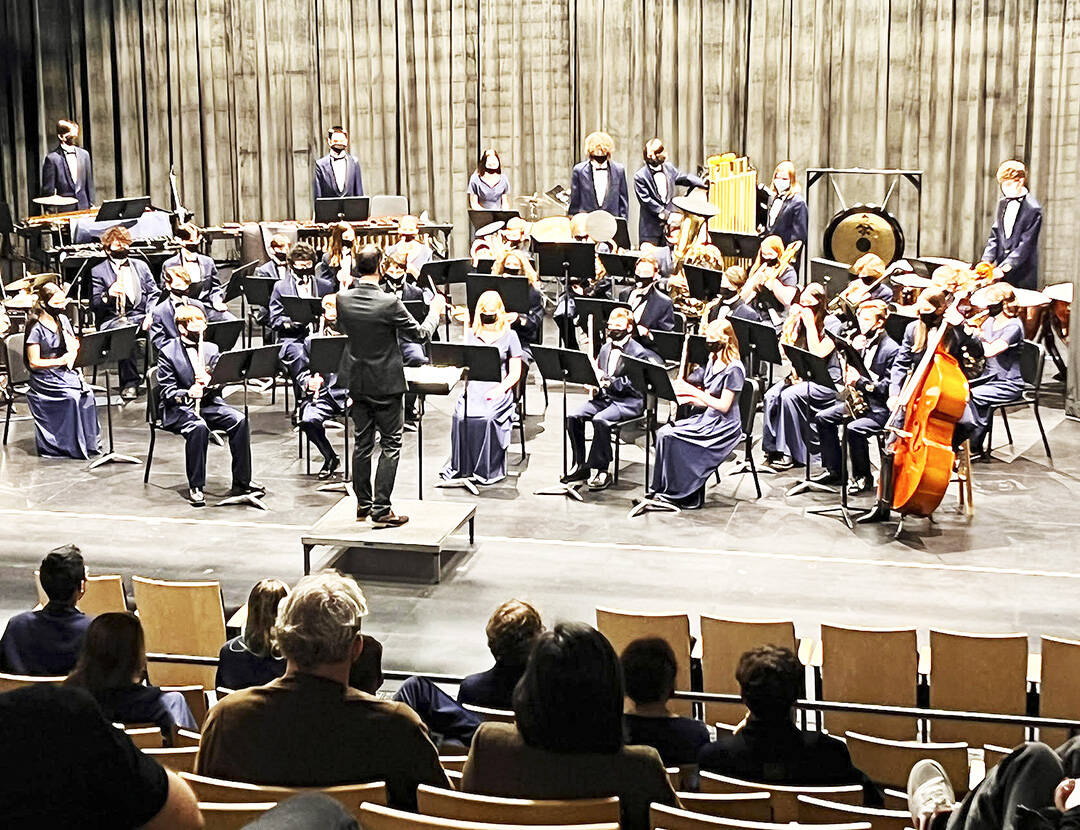A number of people criticized the Bainbridge Island School District for having students wear masks outdoors to protect themseles from COVID-19.
Some went as far to say as in some districts nationwide those policies have led to lawsuits.
During public comments at Thursday’s school board meeting, Timothy Keaton, who formerly attended BI schools, said he knows many people who removed their children from the BI district because of its “toxic environment and some decisions that have been made. Masking dehumanizes us, polarizes us.” He warned the board members that if the mandates don’t change there will be fallout.
Mike Jones, who has lived on BI since 1968 and graduated from Bainbridge High, said masks are not approved by the Food and Drug Administration, they are for emergency use only, and they are subject to consent given by the person. He said the district, and individual board members, could end up in court because this “overreach” is a civil rights violation. “Why should we be paying for your overreach in the form of my taxes?” he asked.
Other comments included:
•Kids who don’t want to wear masks outside are being discriminated against. There is a tradition of noncomformity on BI, but not on this issue.
Enrollment study
Lack of affordable housing also was brought up when consultant Les Kendrick of Educational Data Solutions talked about enrollment trends and projections. “It’s a tricky time forcasting changes” not knowing if numbers are due to COVID or demographics, he said.
He did say numbers have been trending down for 15 years, but are up this year after last year’s lowest drop. “A lot of kids didn’t show up at school due to the pandemic,” he said.
Kendrick said births countywide have been stable at about 3,000 each of the last 20 years. He said there has been less growth in young people that are likely to have kids. Also, Kitsap follows a national trend of women waiting longer to have children, and they’re having fewer of them – 1.7 kids per woman.
As for housing, a home in 2007 had an average cost of almost $800,000. By this year it had jumped to $1.34 million. “A good chunk of the market of families with children can’t afford a home,” he said.
The little amount of housing that has been built in the past 20 years has been multi-family. While that may bring people here, it’s not ideal for families with kids, who like single-family housing better. In the last two decades, numbers for multi-family housing have dropped from 46 to 33 kids per 100 units, Kendrick said.
“You can’t find land for single-family homes,” he said.
Depending on housing, Kendrick said the district could grow to as many as 4,200 students, or decline to 3,300.
He predicted a recovery after COVID, as more students are being home-schooled or attending private schools. Those schools have had increases in attendance since 2010 and homeschooling has grown since 2015, doubling last year compared with the year before. After the pandemic, “parents may make different decisions on education,” Kendrick said.
He suggested more college-credit classes at BHS and/or having seven or eight periods a day so students have more options for classes, although neither would be “a cure all,” he said.
Recruit, retention
Nathan Fitzpatrick, Human Resources director, talked about recruitment and retention in their workforce to reflect the diversity of the community. The district has 22% students of color, but teachers are a 7%. “Students benefit from a teacher who shares their racial background,” Fitzpatrick said.
Fitzpatrick has a hard time recruiting because of the lack of affordable housing – “they want to immerse themselves in the community where they work” – and because the staff size is so small they can’t recruit early in the process.
To connect with more diversity, he suggested things like: Partnering with places like Islandwood, encouraging substitutes to apply, supporting candidates better, and participating more in virtual and college career fairs. He also suggested possibly trying to hire a few teachers earlier in the process because they can guess about at least a few retirees.
Also, Fitzpatrick suggested the district could do a better job of recruiting their own students to choose careers in eduation then come back here to teach, maybe even partnering with other districts.
CTE grant
Sean Eaton, Curriculum and Technology Education director, said they received a Perkins grant for $15,046.
He said they are focusing on recruiting girls and other underrepresented groups, talking in middle schools about different career paths. They try to get students into apprenticeships, technology schools or college while using industry-standard equipment.
They have laser jets and waterjets that can cut metal, aluminum, steel, wood, glass, brass and titanum. The grant will be used to purchase equipment, bring in speakers representative of non-traditional students, and to provide work-based experiences to learn about a high-skill, high-wage and an in-demand industry.
Donations
•To Bainbridge High School, $1,362.50 for a HUDL subscription for volleyball team from BHS Volleyball Boosters.
*To Sakai Intermediate School for $12,703.39 for software subscriptions and student planners from Sakai PTO.



